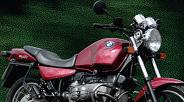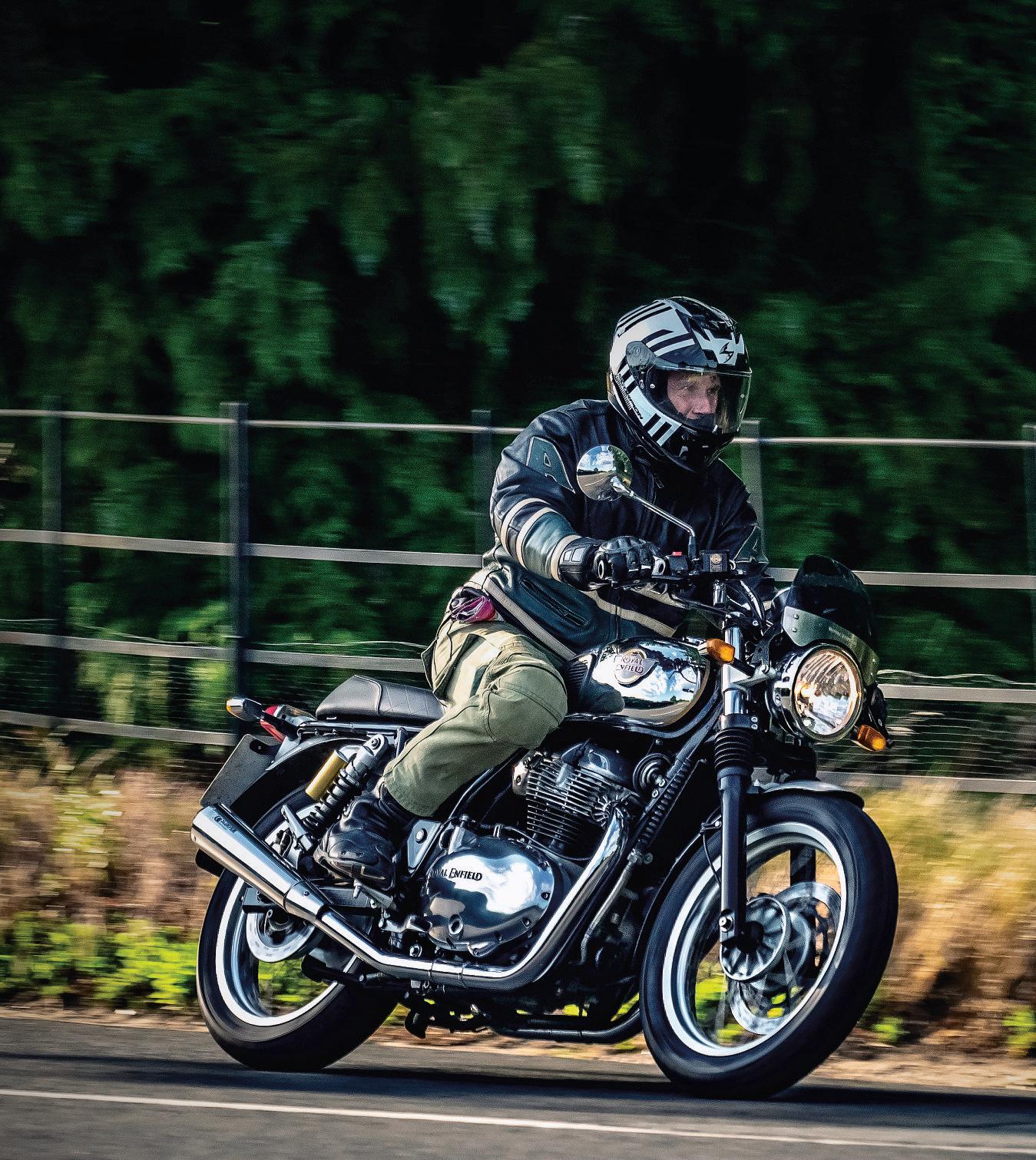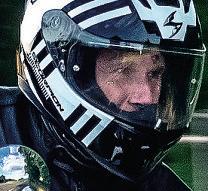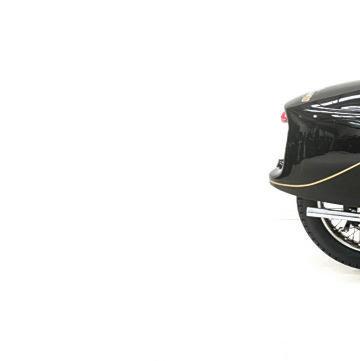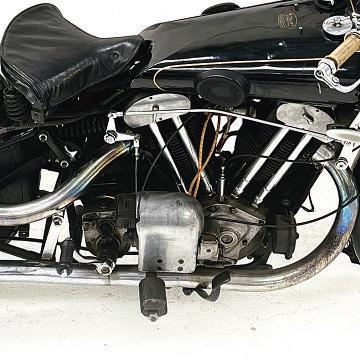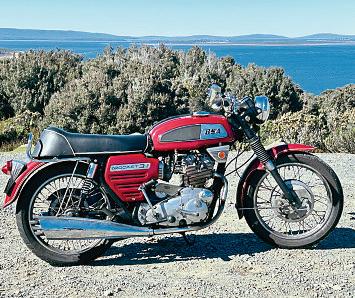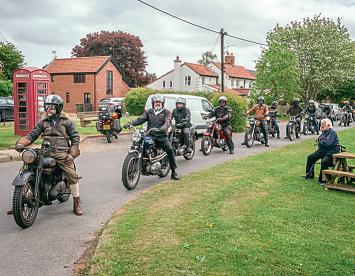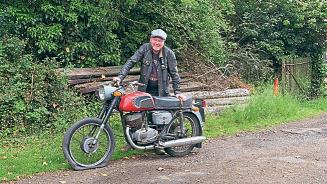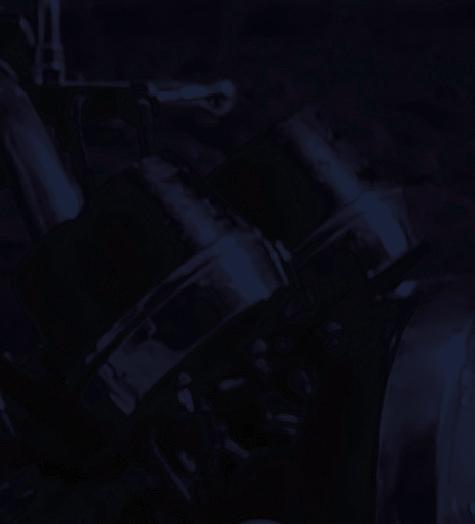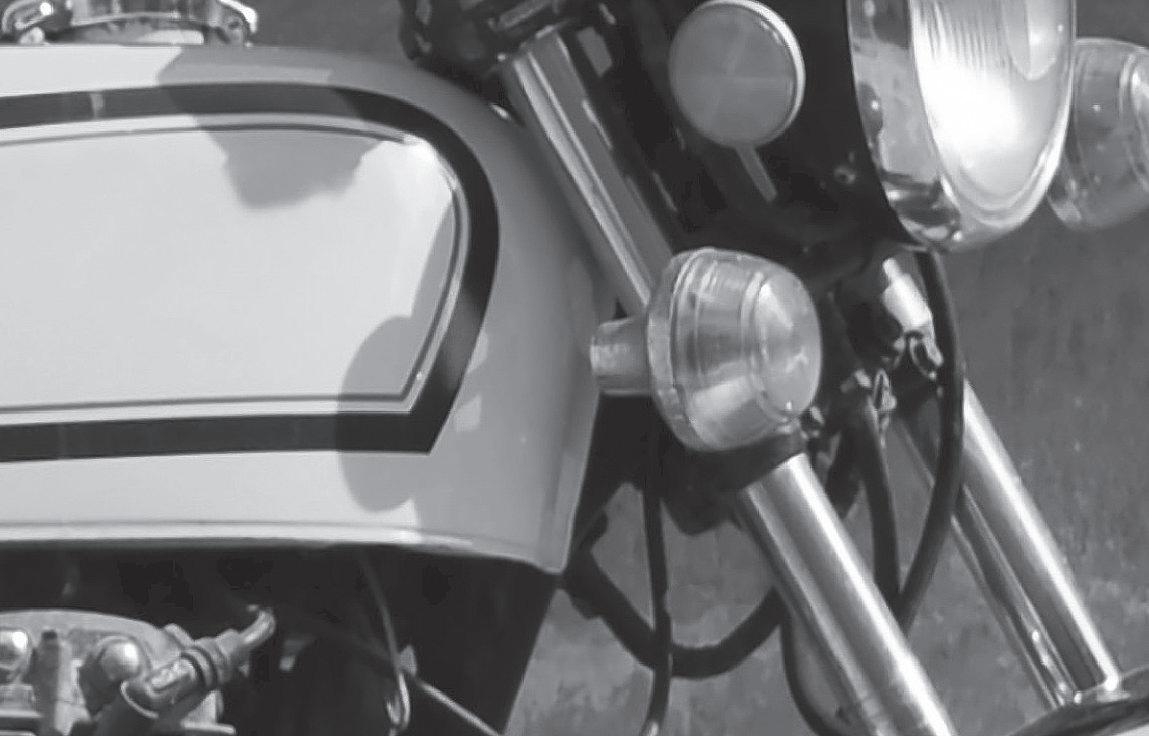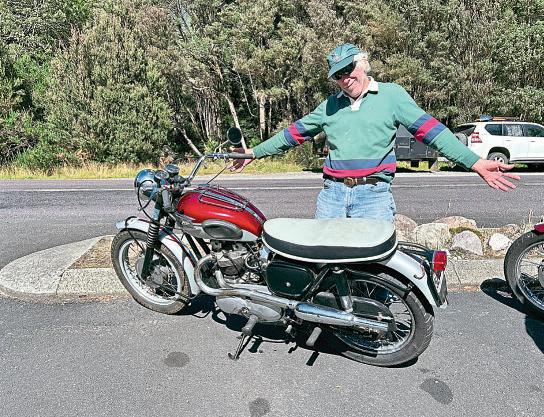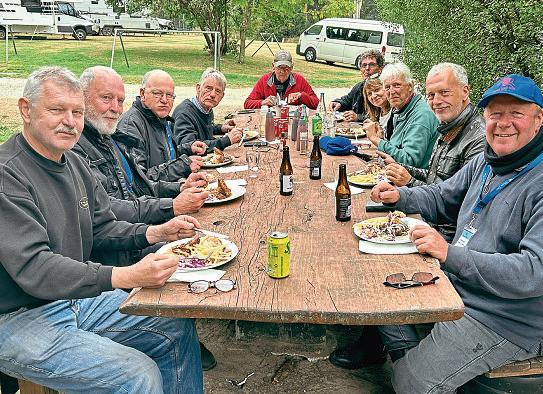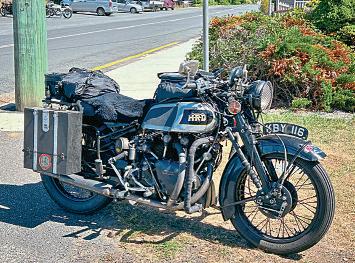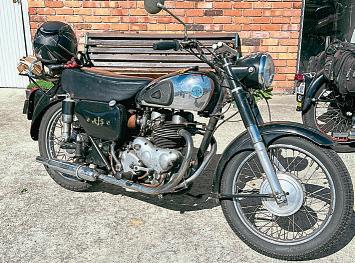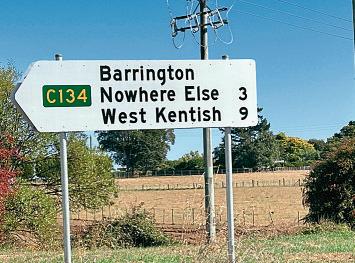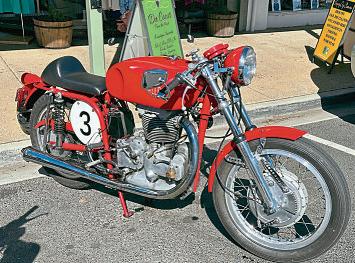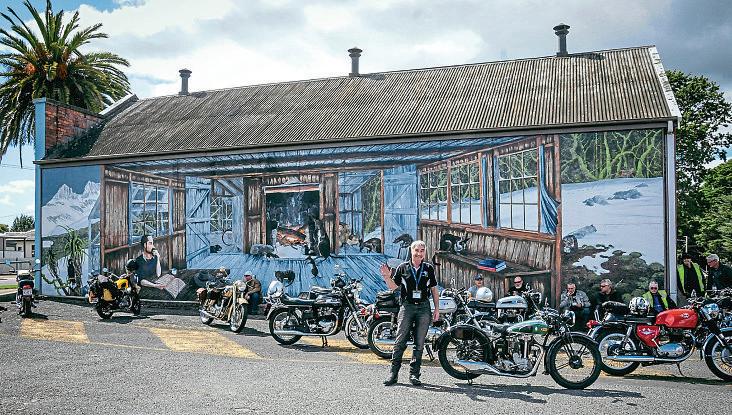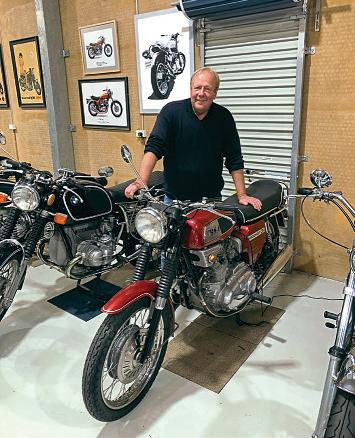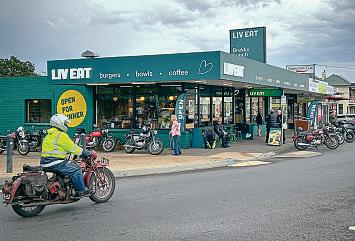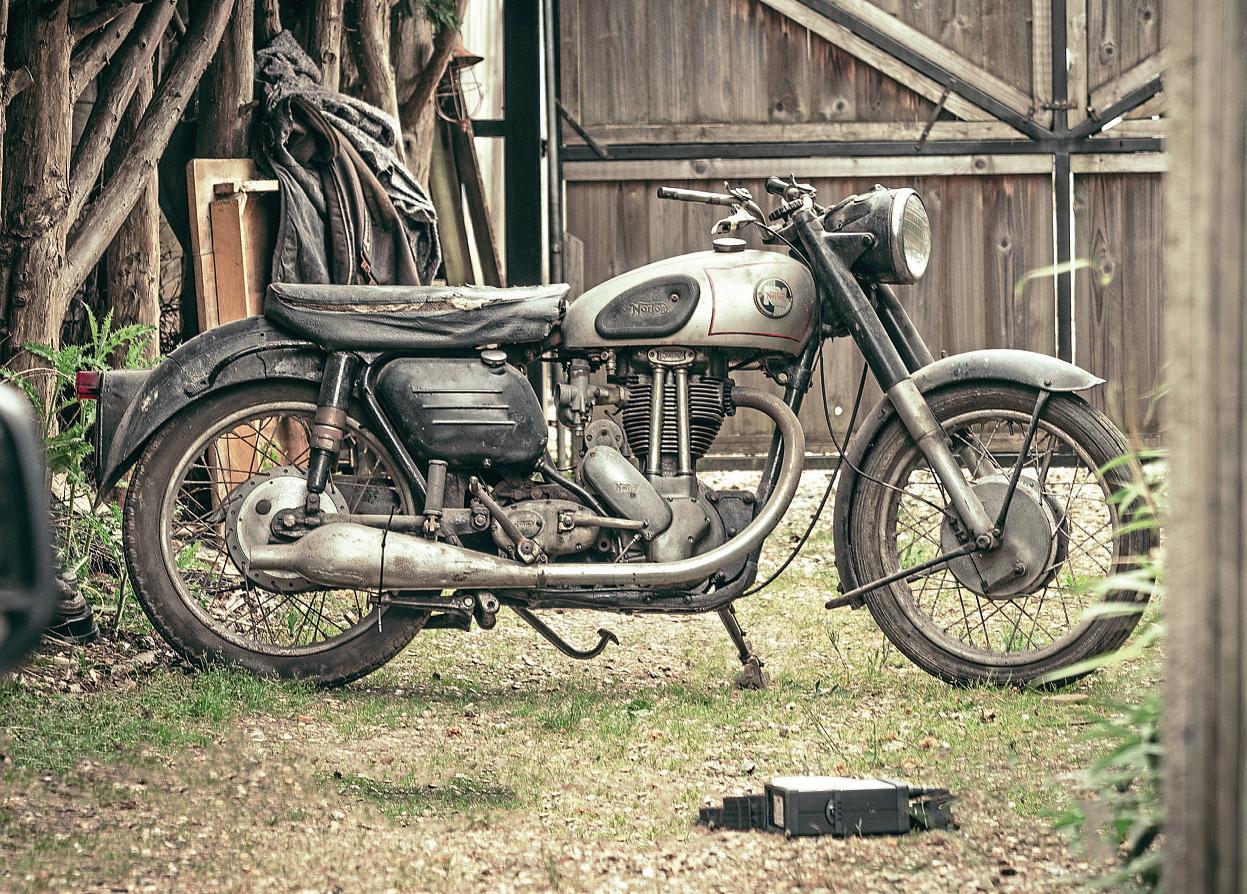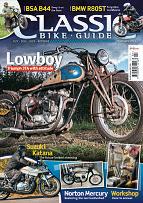This month we have the fastest single in the West –Hai lwood’s Manx Norton
Tour of Tassie
Not on everyone’s holidaylist, butAlan tours Tasmania on aBSA Rocket 3
What wonders do we (attempt) to have foryou next month?
Go on, youknowitmakes sense, especiallywith ourrivals goingall ‘modern’…
What’s happeninginour world of old bi kes?
We wade through the preened beards to find someincredi ble classic bi ke
The best secret showand autojumble in oldbikes is gettingbetter
034 Old Bike Mechanics Directory
An essential list of those happyto work on our old machines. Letus knowofmore!
036 What’son
Pack your sarnies and head out –the next couple of months are stacked full!
038 WhatWe’veTried
Products we li ke and have tested, purelyfor your benefit, you understand…
040 Your Guide To:BSA Tracker
In the shadowofthe man closing the doors, BSAcame out with a little terror!
048 Our future, learning from the past Renaissance Motor Cycle Workshop –helping youlearn howtolook after your bi ke
050 Themoped men
We spend an hi larious daywith an autocycle club on arun out. Wonderful people!
058 Frank Recalls: BMW R100 Mystic
The best BMWever, Franksays.
Listen to his argument, then mock, airhead lovers
066 When Will IBeFamous: Royal EnfeldInterceptor 650
Howdid such acheap bi ke break the motorcycle industry? Because it’sa cracker
074 Reader adverts
With prices lower, youcan buy more! Clear out those bicycles and make space!
086 Whatwe’vebeen up to: Matt’sworkshop
This month we’vebeen doing all those unglamorous jobs youdon’twantto
088 In MakingTheWorkshop: cables
It savesmoney, needs fewspecial tools, andismost rewarding!
092 In TheWorkshop: Barn fnd Norton!
Areal one! ABritish one! With real dirt, dust, and birdpoo! What have we done?
098 Frank’sFamousLast Words
Frank adds his valued t’pence on the modern RoyalEnfields
Oldbikes’bestkept secret TOUR OF TASSIE:
This could possiblybe the bestkept secret in the world of old bikes. It is an event which takes place everytwo years in Australia, restricted to just 120 riders and their machines, which must have been built before1970. Ten days of riding, with optional daytrips interspersed with acouple of rest days for vehicle maintenance,sightseeing or simplysocializing –which entails riding 1500 miles on near-deserted, well-paved roads through some of the most scenic and diverse countryside on the planet. It used to be held everythree years, giventhatthe
organisers arrangeitall in their sparetime. But in response to popular demand, as they say, their recovery timewas cut backtotwo years from the 2020 event onwards.
This event is so consistentlywellsupported that the 120 places for the seventh staging of the rally, held last year, were allspokenfor andthe AUS$350 entry fee paid within 41 minutes of the moment that online registration opened up one year in advance,leaving severalwould-be returnees disappointed.
We aretalking about the Tour of Tassie, or for those unfamiliar with Aussie abbreviation, one lap of the island state
“Tasmania is half the sizeofEngland,yet wi th 576,000 inhabi tants has just 1% of our population, meaning there’s lotsof room forlivingyour life…”
of Tasmania, aka the Apple Isle –look at amap to see why, though some people reckon its heart-shaped. Butthe massive fruit orchards planted by British settlers in the 19th centurythat became astaple
Alan Cathcart thinlydisguisesa once-in-a-lifetime classic tour of Tasmania as work!
Words and galivanting by Alan Cathcart, with photographyby AC Archivesand JimScaysbrook
ingredient in the island’s economic growth were just the start of Australia’s smallest and most southerlystate’sagricultural development, whichmeant its countryside wasswiftlysettled and farmed. Located 240km (150 miles) due southofMelbourne across the Bass Straight, Tasmaniais half the size of England, yetwith 576,000 inhabitants has just 1% of our population, meaning there’slotsofroom forliving your life,evenif45% of them do live in and around the capital of Hobart
I’ve been visiting Australia regularly for the past 50 years. With agrowingnumber of relativesthere,suchvisits have grown longer and morefrequent, yetI’d never been to Tasmania until Iwas invited to be the guestofhonouronlast year’sTour of Tassie.This included being loaned abike by generous local enthusiast Peter Bender, the now-retired former ownerofa large aquacultural business farming salmon, whichhesold to spend moretimewith his superbcollection of about 60 classic British motorcycles.Giventhe tour’sstrictly enforced 1970 cut-off for entries, the1969 frst-seriesBSA Rocket 3that Peter chose
for me to ride could not have been better suited to the trip –especiallysince it came with that all-important accessory, an electric startconversion!
In fact, with 28 entries, BSAs were the most numerousmarque among the 117 starters–three last-minutecancellations couldn’tbereplaced. Next were Nortons with 18, followedby15Triumphs, and then 13 Vincents, including apair of Comet singles. Giventhat the event wasorganised underthe aegisofthe British Motorcycle Club of Tasmania, it wasperhaps inevitable that suchbrands predominated, but
therewerealso severalBMWs, Indians and Harleys along for the ride,and two Nimbuses (Nimbi?), albeit ameretrio of Italian bikes –one Moto Guzzi, aDucati and Jordan Piovesana’slovelyGilera Saturno,whichsadlyexpiredearlyonafter completing the rallytwo years before.
Therewere, rather strangely, no ‘60s Hondas,but three Japanese two-strokes took part –one YR1 Yamaha and apairofSuzukis, with Stephen Cowburn’simmaculate T500 Titan frstregistered on December 1, 1969, just squeaking in on eligibility by 31 days! The oldest machine on the entrylist
AC at Nelson Falls
Bill Overeem changing plug on his Vincent Comet
AnthonySmeekes’ 1964 BSAA50 RoyalStar
The Bender museum
Bowe Wilson’s1940 BMWR66 600cc
Peter Bender’samazing collection
was the 1926 Norton Model 18belonging to Brendon McKay, one of nine riderswearing lightblue WA tunics, who’dmadethe arduous8000kmroundtrip from Western Australia across the Nullabortotakepart. After some mechanical issues resolved by the loan of newgearboxinternals for the 98-year-old bike –whichlocal enthusiast Howard Burrowsjust happened to have on the shelf, as youdo, in Australia’s remote island state –Brendon’sNorton ran stronglytothe end. The overall reliability factor wasremarkableand spokevolumes for theattention participants hadpaid to bike preparation for the 2400km ride.Just three of the 117 entries suffered terminal
mechanical illness, theGilera, aBSA and aTriumph,and hadtobecollected by the sweep-up truck– afrst-rate record considering howmanybikes in action were the wrongside of 75 years old.
Measuring about200 miles top to bottom and side to side,Tassiehas lots of room for riding, as well as ahugevariety of scenery, and the tourroute takes maximum advantage of that. It starts eachtime in Ulverstone,onthe north coast of the island just 10 miles from the Devonportferry terminal,wherethe 9½-hourboat ride from Victoria across the Bass Straight docks; those who wanted to leave their vans or trailers behind could do so safely. But it also
meant that anyone living in Hobart had to take the long 185-mile ride north to make the start –including me,onthe Bender Beeza. Still, it wasagood chance to get dialled in to local conditions… and to learn that Peter doesn’tlike to hang about on his 1937 Brough Superior, with arareBentley &Draper sprung frame,breezing past aquamarine-tinted lakes lining the fast, open roads of the Central Highlands at 6065mph, at the head of aslightlyimprobable fotilla ofexotica being ridden in amanner that Lawrence of Arabia would surelyhave approved of.
This preface to the rallyproper set the scene for anear-idyllic fortnight,
Brian Davis’ 1962 Triumph TrophyTR6 expired on daythree
Brough contingent at lunch at Weldborough Hotel
BSAGold Stars times twoCraig Clark’s1973 Moto Guzzi 850 Eldorado Franc Trento’s 1953 Vincent Black Shadow
Brough Superior car!
British trio –Sunbeam, BSA&Triumph
punctuated by just tworainy days,which wasapparentlypretty lucky even in late summer. In fact, the climate isveryEnglish, just5°c or so warmer year-round, albeit with none of thetorrid summerheatof mainlandAustralia. Afterregistration at theUlverstone Surf Club beforesetting out for an 80-mile acclimatisation ride inland to LevenCanyonLookout, through scenery whichresembled Scotland in sunshine, we had abriefng from rallydirector Gary Smith, whose 1951 BSA B31/33 special with Gold Star cams had aturn of speed suffcient for himtobeever-present at each stop along the way.
And that’sone reason for the Tour of Tassie’sundeniableappeal. Its USP is that it’sfawlesslywellorganised by Gary and his gang, but without that beingtoo obvious. The only must-do is to attend Gary’sdaily briefngatthe start of each day’srun, as much to keepabreast of any
changes to the route owing to road works or suchlike. After that you’refreetogoas youplease,atthe pace of your choosing over those well-surfaced scenic roads. Thereare no deadlines to meet and no events to attend beyond optional lunches in remote settings that youcan purchase aticketfor in advance –just enjoythe ride, with acouple of mates or on your own. The whole event ranwith smooth precision, with clearly visible direction signs laidout eachmorning by head marshal John Rook. These complimented the very complete dailyroute map contained in the 52-page road book produced by rallysecretaryChris Owens, whichcontained everything you needed to knowabout that day’srouting, including fuel availability for both bike and rider.Two breakdown trailersfollowed the whole trip but were mercifullyunderused, as didatruckdrivenbyGeorge and Wim, who between eachovernight stop
picked up the bags and deliveredthem to wherever youwerestaying. The whole event ranlikeclockwork.
Daytwo sawafull-day excursion to Sheffeld and Mole Creek, wheremost of us stopped for abarbecue lunchenmasse in the garden of the local hotel. This was the site of one of the last sightings of a Tasmanian Tiger; in reality,a dog-sized meat-eating marsupial with stripes on its backthat washunted to extinction in the last century. There’sa rather mangylooking pelt on displayinthe hotel.But that raises one of the most –maybe the only– disturbing thing aboutriding in Tassie,and that’sthe hugeamount of roadkill littering the roads. The island state is moredenselypackedwith livestockthan mainland Oz and it’sinitially upsetting to seethe copious corpses of dead platypuses, wombats, wallabies (there’snokangaroos, though), echidnas and even arare
Martin Robinson’s 1956 AJS Model 30 600cc twin
Russell Lockwood and his rare 1935 Triumph6 Peter Birthisel with his Vindian recreation
Owner Peter Bender
RallySecretary Chris Owens beforea Shefeldmural
NowhereElse is avillage!
Jordan Piovesana’s1950 GileraSaturno
Tasmanian devil littering the road.Just as in mainland Australia, it pays nottoridea bike from an hour beforesunset onwardsin the countryside
Having done our tiger spotting, my Vincent Comet-riding roommate Bill Overeem, oneofthe six committee members, suggested we doubled back to Sheffeld to see the fantasticarray of more than60muralscoveringthe walls of around half its buildings. Mainlydepicting the area’srichhistory and beautifulnatural scenery(though my favourite wasAlf Rowe’s Garage, completewith the man
himself next to his MGAsports car), the murals attract 200,000-pluspeople to the town annually, lots of them Japanese judging by the tourbus whicharrived just as we were leaving. Sheffeld epitomises the energy and inventiveness that seems so prevalent in Tassie –and also the security Bill insisted it would be perfectlyokayto leaveour helmets and riding jackets draped over the bikes while we strolled around town to viewthe murals, and 90 minutes later he wasprovenright!
Next daywehad along165-mile ride south to the harbourside former logging
“In fact, the climateis very English, just5°c or so warmer year round, albei twithnone of the torrid summer heat of mainland Australia.”
town of Strahan, our base for twodays, with thechance of an optional ride to Reece Dam, centreofthe frsthydroelectric scheme in Australia or, for those optingtotakearest from riding, aGordon Rivercruise through Macquarie Harbour Thereweencountered for thefrst time Tasmania’sconvict past, the remote Sarah’sIsland penal settlement, where convicts were frst sent by the British Government from 1822 on.About 80,000 convicts were transported to VanDiemen’s Land, as Tasmania wasfrst known, before this horrifc practice ceased in 1853; it acquired its current name twoyears later Aharbourside barbecue that evening on the beach, with delicious salmon, wasan antidote to history.
Next came the longest day’sride,and ascenic one, too– a180-milejourney to Hobart. First we climbed gentlyup to Queenstown, aformer mining town surrounded by baremountains with unusual pink and grey hues, where gold, silver and cooper were all mined until 2014. Thenthe Lyell Highway headedoff to Hobartvia thedramatic West Coast Range of mountains leadingtoDerwent Bridge. Just past theresits the literallyphenomenal The Wall in theWilderness (www thewalltasmania.com.au), wheresince 1995 sculptorGregDuncan has been carving a100m by 3m fat-reliefofexplorers and bushmen in Huonpine.It’sbeencalled the Sistine Chapel in wood and isa literally incredible achievement that’sall the more striking for being so unexpected. It’son the label–this is literally in the middle of nowhere. I’dlike to have shown yousome photos, but none areallowed, and they don’tsell postcards, either
On the second of twofreedaysin Hobart, Peter Bender graciously hosted alunchtime barbecue in Tinderbox, his magnifcent modern mansionoverlooking the Southern Ocean –and thisincluded achance to admire his 60-bike collection. That evening wasmoreformal,the gala dinner at the RoyalHobart YachtClub,at whichIwas interviewedbymymate and editor of Old Bike Australasia magazine,Jim Scaysbrook. The next daysaw the frst rainfall as we rode 80 miles round the large bayonwhichHobart sits to Port Arthur, the largest penal settlement in Australia, and farand away the best preserved today. The scale of the place is trulybreathtaking, but it’savivid reminder of justhow cruel our ancestors were andapotent example of man’sinhumanity to man. Tasmania has severalUNESCO World Heritage Sites,
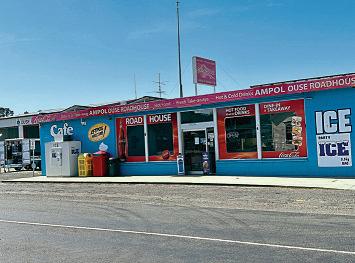
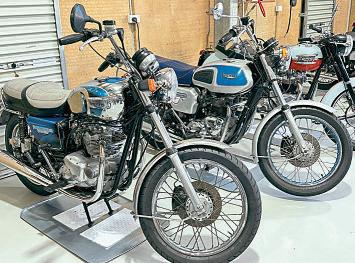

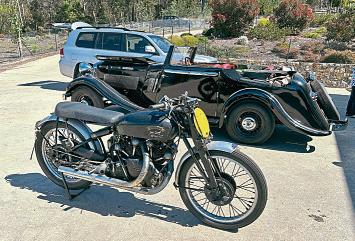

including avast Wilderness World Heritage Area whichcovers 20% ofthe island’sland mass. It encompasses no fewerthanseven nationalparks,all wrappedupinone big, protected Tasmania Wilderness, plus there arefve heritage places sites relating to the forced transportation of convicts, headed
by Port Arthur.These sites arepart of the Australian Convict Sites World Heritage Property,whichwas inscribed on the UNESCO World Heritage Listin2010. The next twodayscomprised ascenic 280-mile journeyalong Tasmania’sEast Coast to Launceston, its second city,
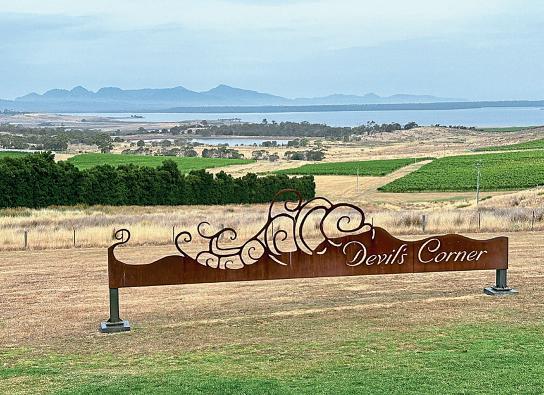

with an overnight stopinBicheno,a fshing port wherefsh and chips wasthe musthave dinner.Nextday,passing achain of lagoonsbefore stopping forcoffee in the bustling resort of St Helens, we then turned inlandfor the steep climb to lunch at the Weldborough Inn, dating backto 1876. Sitting at the footofthe iconic Blue Tier mountain bike trailleading to Derby, the MoabofTassie,thiswas thegateway to some superlative motorcycling country as the road twisted and turned its wayto Targaand thence to Launceston. Along the waywestopped for wine tasting at Devil’s Corner; Tasmania wasone of theearliest parts of Australia to be planted with vines and waseventhe source of cuttings for the frst vineyardsinVictoria and South Australia. Located at amoresoutherly latitude than the rest of Australia’s wine regions, Tasmania has acooler climate and the potential to make distinctly different wines than in the rest ofthe country.The region growsprimarilypinot noir,chardonnayand sauvignonblanc, and global warming has had positive effects on the local wineindustry,allowing the grapes to ripen fullyand produceeventastier wine. Then came what transpired to be my favourite day’srun, a135-mileloop through the Central Highlandsand parts of the Great WesternTiers mountain range, around the largest of the lakes in the Tassie
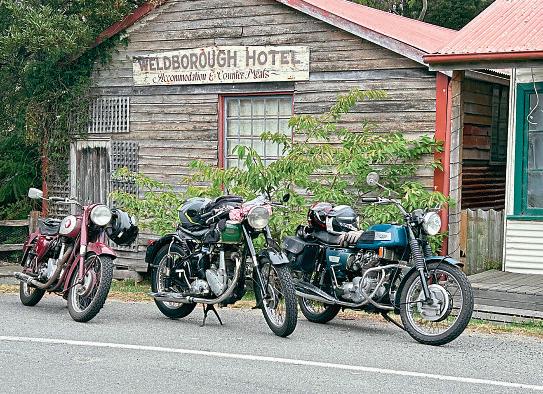
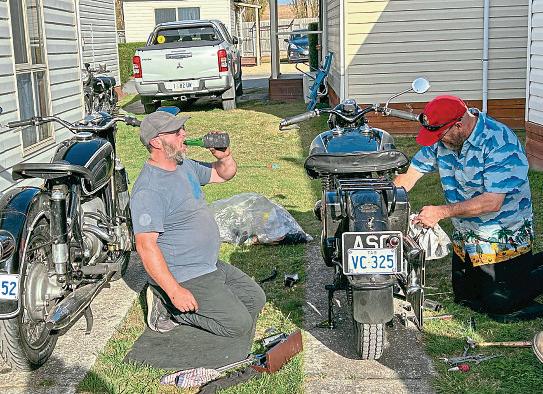
Lake District called the Great Lake.MyBSA Triple had been fettled overnight by hardworking Team Bender mechanic Richard Roberts, so it wasinfne shape for alap of the 4.5-mile Longford Circuit outside the historic eponymous market town,anultrafastpublic roads course whichhosted the Australian car GP in the 1950s and 1960s. With the outright lap recordset in 1968 by Kiwi Chris Amon in aworks Ferrari 350P4, averaging 122.17mph, this wasnot for the faint-hearted –asa lap on the Rocket 3 proved. Ijust needed to be sureRichardhad got it running right, yousee…
Thereafter,the very grippyand wellsurfaced road circled three sides of the Great Lake beforedropping down to Deloraine,with the glassy Meander River fowing through it. We were spoilt for choice by the great cafes here– Tasmanian café cultureiswell-developed and most have reallytasty food. Pricesare lowerthan on the mainland for almost everything, probablyrefecting the fact that this is not as prosperousastate as NSW or Victoria. The fnal day’sride took us from Launceston to Devonport, with a scenic little detour through what had all the makings of arainforest –lush and green wooded terrain, beforepassing the Australian Axeman’sHall of Fame Museum in Latrobe –yes, really! –atthe gateway to the port. Thatevening sawthe farewell
dinner held, and afondfarewell to about 116 newfriends.
“Asclassic rallies go,itdoesn’tget any better than this,”Jim Scaysbrook hadsaid to me over abeer back in Hobart. Anddo youknowwhat –he’sright. The organising committee did afabulous job of ensuring everything went smoothlyand seemed to have thought of everything –well, Isuppose it wastheir seventh such event, so they’d had abit of practice.But it’sa hardlineto walk between being effcient and offcious, and the Tour of Tassie organisersmanaged to do exactlythat, resulting in this warm, convivial experience.
“Tasmania is just the most fantastic motorcycling country, with beautiful roads that arewell maintained, withverylittle traffc, and reallymotorcycle-conscious drivers. If youcome up behind someone, they’ll pull over and let youpass,”said NickJeffery, afellowBrit on his thirdtour on aBender-loaned bike.“The scenery is wonderful, with agreat variety of countryside in arelatively smallspace, and youmeet such adiverse selection of people here, whereeveryone is so friendly and hospitable, and just plain nice.It’s worth the time and expense of getting here, because it’salong old fight out from Europe.But Vaut le voyage,astheysay in the Michelin Guide!”
Icouldn’tagree more









